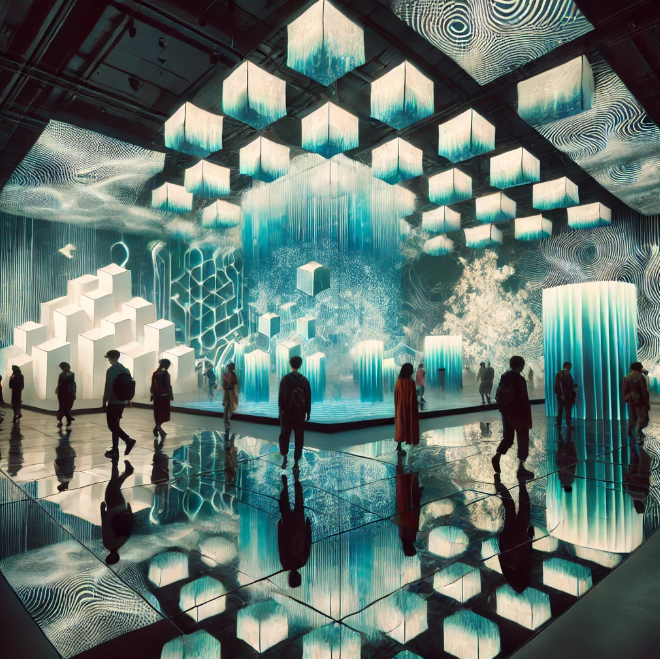This week, our group The Sleepwalkers engaged in an open discussion to determine our collective curatorial theme. Each member proposed a different idea, leading to a thought-provoking exchange on the intersections of perception, space, and narrative construction. After multiple rounds of discussion and voting, we settled on the theme: “Who Defines Reality?”
Proposed Themes & Discussions
1、Dream Construction & Collective Imagination
One proposal centered on dreamscapes and participation in constructing alternate realities. This idea explored interactive installations where visitors shape their own dream-like experiences, challenging the perception of reality as fixed.
2、Collapsing Realities & Instability of Perception
Another idea examined the fragility of reality, exploring how subtle disruptions—like mirrored distortions, time loops, and glitch aesthetics—can make the familiar feel unstable.
3、Fluid Cities & Urban Spaces in Transition
Inspired by Italo Calvino’s Invisible Cities, this theme suggested an exhibition focusing on the evolving, impermanent nature of urban environments.
4、Rewriting History: Memory as a Kaleidoscope
This proposal considered the malleability of historical narratives—how history is constantly rewritten through archives, AI-generated documents, and shifting political power.
5、Peep Show: Gazing and the Power of Watching
This idea challenged the mechanisms of viewing, referencing historical peep shows and contemporary digital surveillance.

Photograph taken by the author
Final Theme: “Who Defines Reality?”
Through these discussions, we realized that all our proposals shared a common thread: reality is not a neutral given, but something constantly shaped by perception, power, and technology. Our final theme, “Who Defines Reality?”, builds on this by questioning how visual technologies, historical narratives, and institutional structures construct and control our understanding of the world.
The exhibition will integrate elements from all our initial ideas: interactive installations that distort perception, non-linear storytelling that fractures historical narratives, and participatory works that challenge the authority of the curator. By dismantling singular truths, we invite the audience to consider: when reality is mediated through technology, memory, and power, do we still have the agency to define it?
This discussion process not only shaped our theme but also deepened our understanding of how curatorial practices can challenge dominant narratives. The Sleepwalkers are not just presenting an exhibition—we are opening a space where reality is no longer imposed, but questioned, negotiated, and reconstructed.



Leave a Reply